A meteorite crashes near the Tunguska river. After the impact, an ancient corruption awakens that affects the land and the creatures in the area. It’s up to a bunch of adventurers, the former war heroes of the game Scythe and its expansions, to go on a journey of discovery! Take on the corruption in Expeditions: the sequel to Scythe.
Scythe
A few years ago, one of my favorite games was released: Scythe by Stonemaier Games. It is set in the 1920s a fictional version of Europe. World War I has just ended, but the outcome and consequences of the war are different from our non-fictional timeline and the countries of Europe. And especially for Central and Eastern Europe: there, sooner than expected, they plunge into a cold war, an arms race with fragile alliances.
So in Scythe’s alternate timeline, Europe looks a whole lot different. Country borders are different: certain countries either still exist or no longer exist. Because of the arms race and a mysterious weapons factory in Eastern Europe, innovative and dangerous weapons appear on the scene, including giant mechanical monsters. Despite the constant threat of conflict, farmers try to cultivate the land and explorers make contact with the various peoples.
Scythe is an interactive and dynamic cold war set in the beautifully illustrated world of the 1920+ universe. With various elements and flavors of a 4X game, players explore Eastern Europe and specifically to the factory, cultivate resources with their workers, build their war machine and civilization, and (possibly) battle other players for control of land and resources. Make yourself popular for a full war chest and skillfully work on the various objectives to achieve victory.
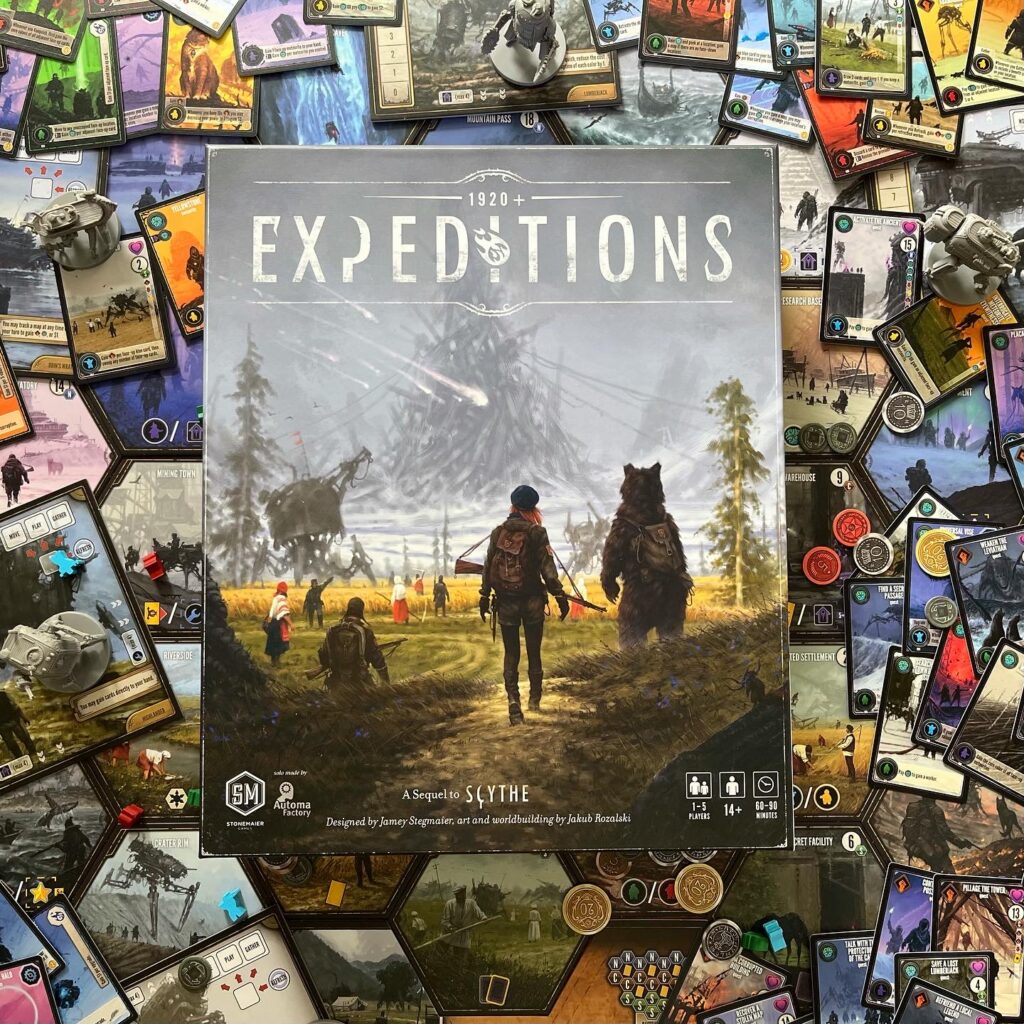
The various expansions introduced new peoples from afar and even large aircraft. In addition to the various expansions that introduced new game mechanics, Rise of Fenris brought us a narrative campaign and various modules. Rick, Chris and myself played this campaign at a lightning pace. The various play sessions in this campaign make up my favorite and memorable gaming memories.
Background and goal
In the Rise of Fenris expansion, a common enemy emerges in Eastern Europe. After players complete the campaign and defeat the threat, a fragile peace slowly returns. However, there is a new threat: an immense explosion with strange consequences. Namely, in Siberia, a meteorite crashes near the Tunguska river (inspired by theories about an actual explosion that took place in this area). As a result of this impact, a new danger appears: corruption. A researcher goes missing without a trace, and the heroes of (cold) war yearn for a new adventure: players go on a journeys of discovery. Players go on Expeditions: the sequel to Scythe.
Similar to Scythe, Expeditions is over after a player manages to complete a number of objectives. These goals are obviously different than in Scythe since the game play is substantially different. Players achieve their goals by exploring unexplored terrain, defeating corruption, collecting items, deciphering meteorites, solving quests and deploying workers, but most importantly: setting up an efficient combination of actions and bonuses to be the first to cross the finish line and earn the most points (money).
Setup
At the beginning of the game, players form the land they are going to explore by placing a set of tiles. Only the southern tiles are placed faced open and the rest of the tiles must be discovered first. Map tokens are placed on the closed tiles. Cards are placed on all empty spaces in the land. The deck of cards is extensive and there are items, meteorites and quests to obtain. All these cards have different possibilities to be deployed, but more on that later in this review.
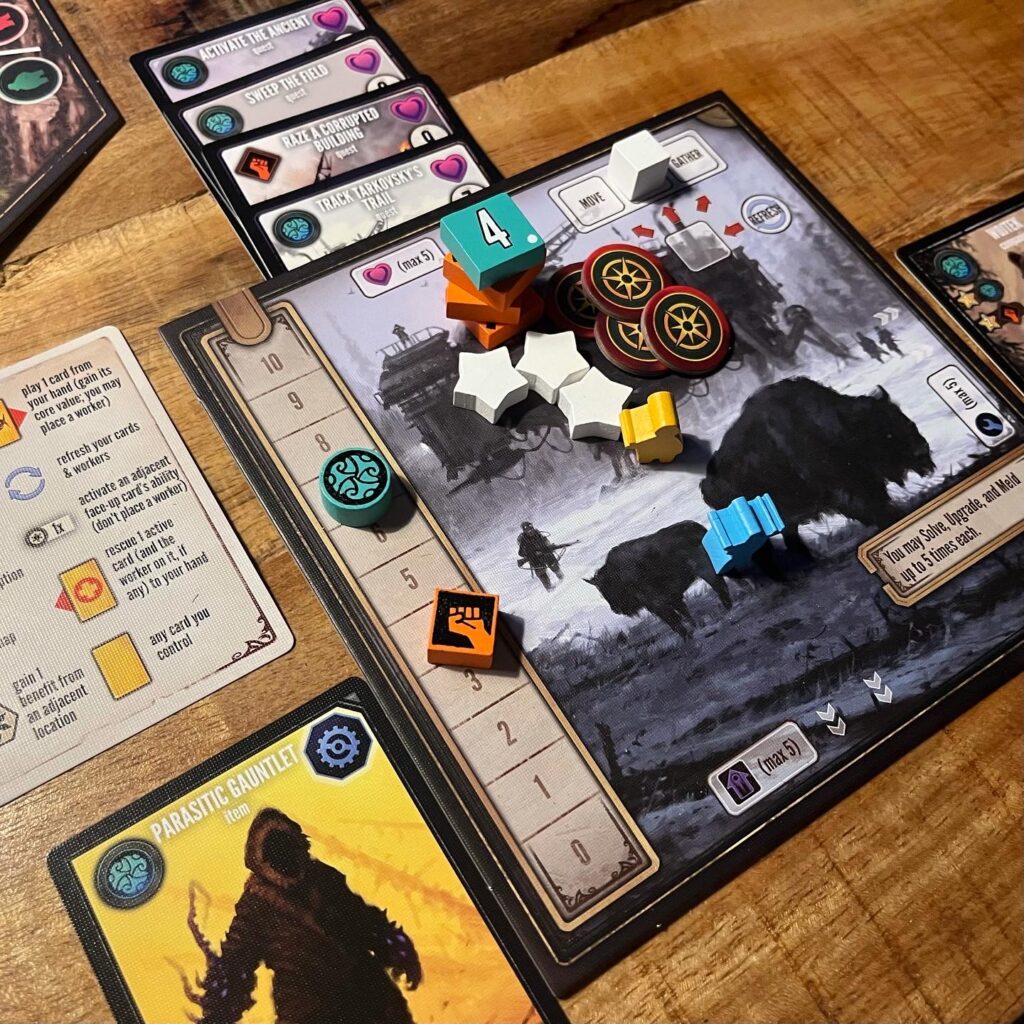
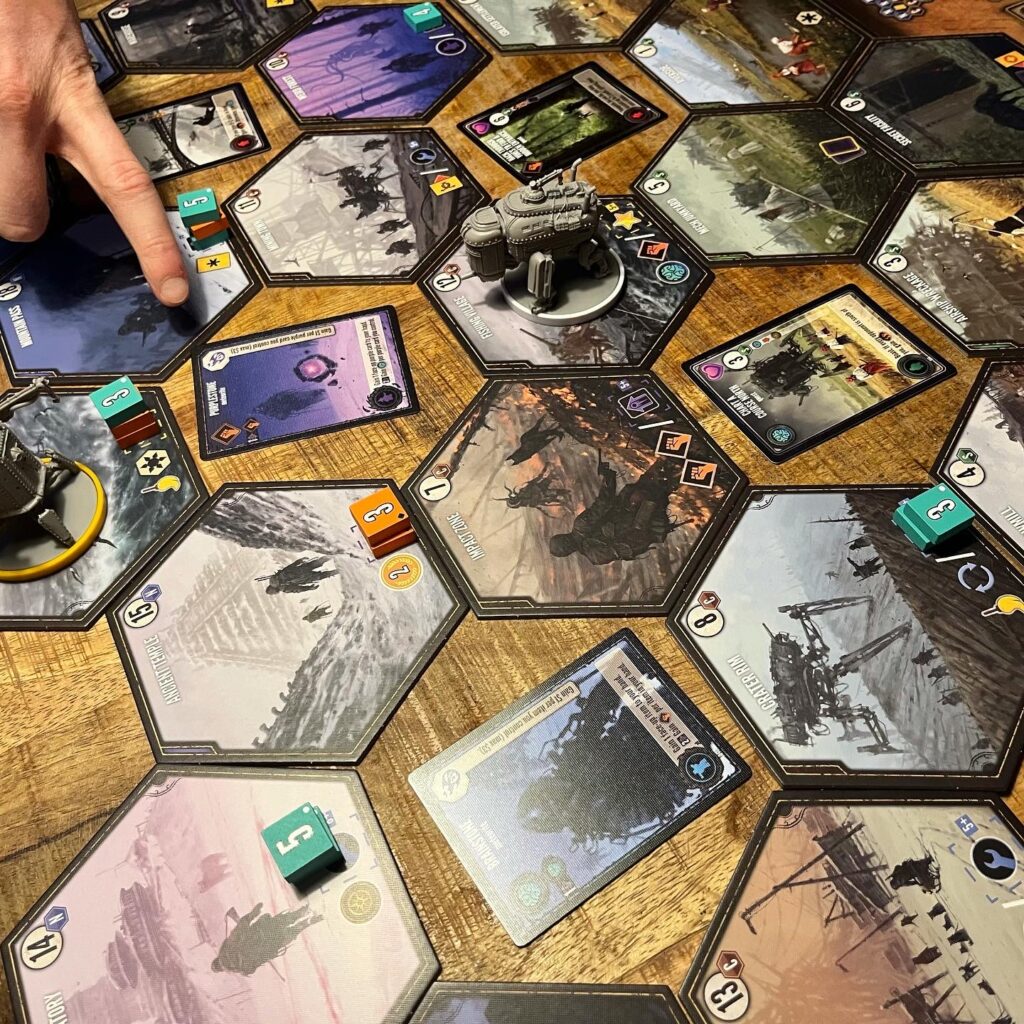
In the cloth drawstring bag, all corruption markers are placed except those with the number 20. Each player gets a unique character and its ally (this player’s starting cards) and tokens in the corresponding colors and also a Mech with corresponding player board. Each Mech has a special and unique characteristic.
Gameplay
A primary game mechanism of Expeditions is also slightly similar to Scythe in terms of experience. In Scythe you had different spaces on your player board with different actions. Each turn, players would move their pawn to a new space to perform an action and, with exceptions, they could not activate the same action space twice in consecutive turns.
In Expeditions, there are three standard actions: Move, Gather and Play. Also in Expeditions, some actions are not always available. You move your action marker to the next field or to an unoccupied field and then you can perform all available actions. At the beginning of the game or after a refresh all fields are visible, but in subsequent turns only two actions are visible each time until a player does a refresh (often by skipping a turn). By the way, you can play these actions in an order of your choice.
Move is pretty self-explanatory. Move your Mech to a new field. If you reach an undiscovered tile, you get the card token (with this you can fulfill a specific objective, as well as pay for special actions). Newly discovered fields also get corruption tiles drawn from the cloth bag.
With Gather you can receive the bonuses indicated on the location tile. Often you can earn workers or cards with these, as well as special actions such as completing goals with a Boast action, upgrading (which makes the continuous effects of item cards permanently employable, and which also allows you to achieve one of the goals), collecting meteorites for bonuses (and achieving a goal) and so on.
Cards you collect generally appear on the right side of your player board. The cards on the left side of your board are deployable, and cards are moved from the right side to the left when you refresh. You can play a card from the left side with the Play action. You then get Guile and/or Power (you use this to fight corruption and complete quests, among other things) indicated on the card and by placing the correct color worker on the card you can perform the effect.
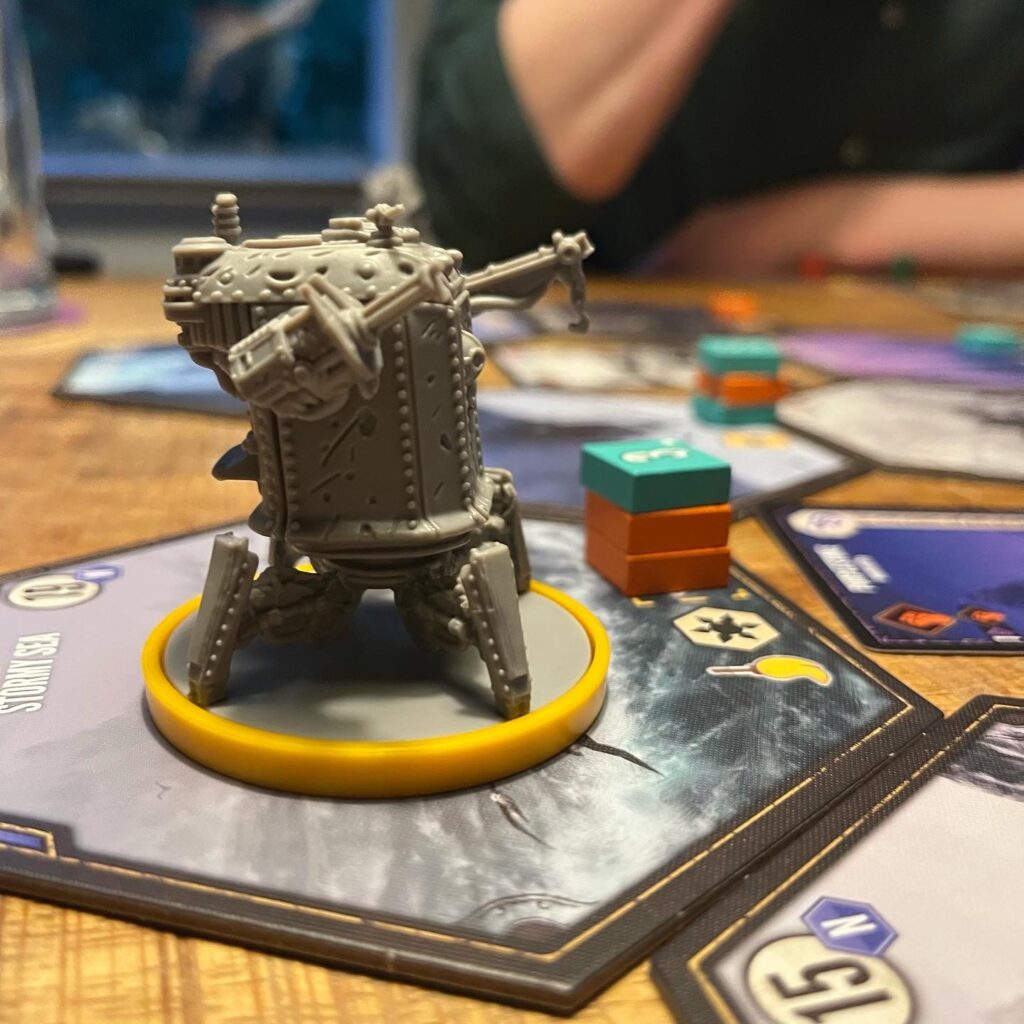

The different types of cards have multiple uses: namely for their actions, but also as items to upgrade for permanent bonuses, quests to complete and receive rewards and meteorites for stackable temporary bonuses. Once a card has been used for the latter three options, that card is no longer usable for the Play action.
Queests are completed by moving to an appropriate location and playing your character card with the Play action and paying the indicated cost. With the special Vanquish action, by playing your character card, you can defeat corruption by deploying Guile of Power. Defeated corruption you place on your player board and these earn points at the end of the game, but also contribute to one of the goals to achieve.
That, despite the amount of words, is the gameplay of Expeditions in a nutshell. Once a player has completed four goals, each player has a single turn left and the game is over. Players receive points for completed objectives depending on the amount of quests completed. Players also get points for upgraded items, coins collected and defeated corruption. The player with the most dough wins.
Conclusion
There is a lot of different things involved in Expeditions. That may be overwhelming for new players, but it was no different for Scythe. In fact, there are many more possibilities with the cards, tiles, mech, etc. than I outline here (and I could write a whole book about that), but this does give you an idea of the general gameplay. There are many combinations players can make, and the cards’ properties also vary widely. Through the correct interplay of actions and bonuses, players can set up a well-oiled scoring machine.
The general flow of the game is clear, but the complexity lies mainly in the different possibilities, choices, special rules and combinations. So while this can be potentially overwhelming at the beginning (and the game length can be reasonable if you want to explain in detail), the eventual game flow is fairly intuitive once players are familiar with the various outlines and principles.
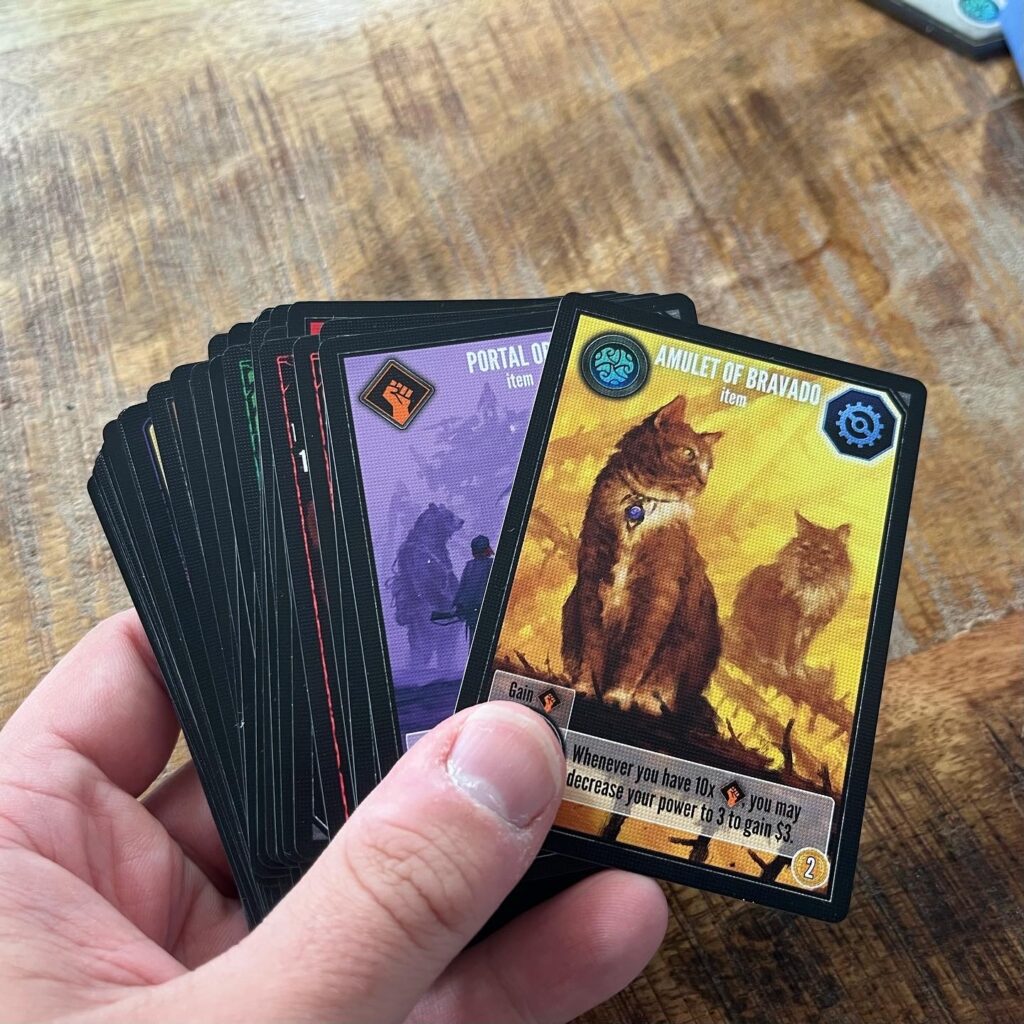
Expeditions is a lot less interactive than Scythe, though. Expeditions has little conflict and players only get in each other’s way by reaching or occupying a location earlier or by taking certain cards earlier. For the most part, players are mostly concerned with themselves. They do have to keep a close eye on other players, however, for achieving goals, because you may be able to slow down other players somewhat indirectly. Players cannot attack or directly harm each other. This makes it more convivial, but somewhat less dynamic than Scythe.
Whereas Scythe especially excels when played with a large group, Expeditions has a bit more downtime and is better suited with one smaller group of players. The artwork remains brilliant and the game play is a very interesting puzzle. The dilemmas and choices are strategic and complex, making achieving your goals rewarding. The game mechanics feel fresh, but for Scythe players perhaps surprisingly familiar and yet completely different.



